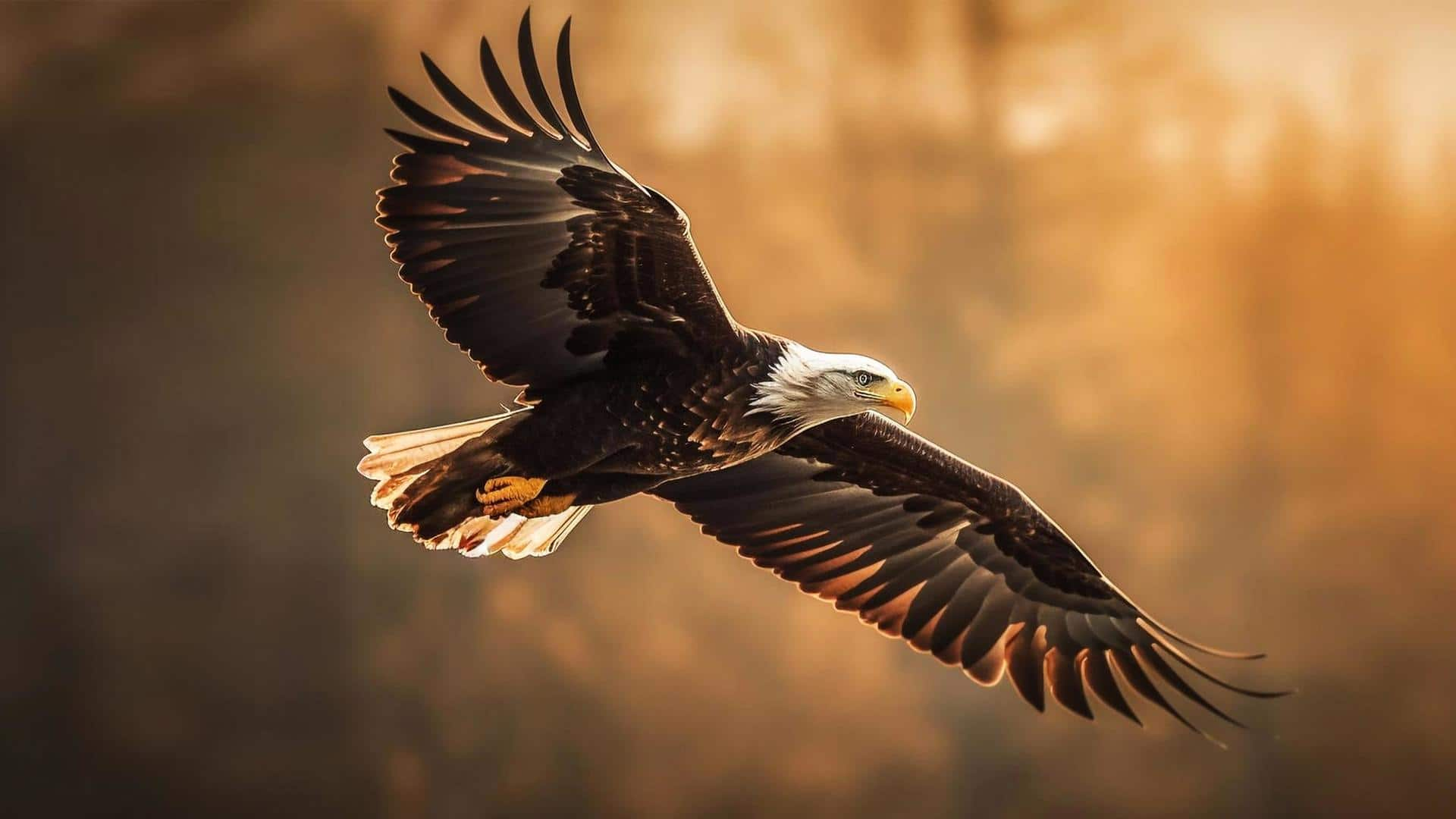
5 amazing facts you probably didn't know about eagles
What's the story
Eagles are fascinating and remarkable birds that often captivate us while soaring gracefully in clear blue skies.
One of the largest birds, they also boast several unique characteristics that make them look awfully majestic, setting them apart from other birds.
Eagles often symbolize power, ferocity, and freedom.
Check out these five intriguing facts that you probably did not know about these aerial predators.
#1
There are roughly 60 eagle species
Eagles belong to the Accipitridae family of birds.
There are around 60 different species of these birds, with the majority present in Eurasia and Africa, and only 14 species found in other areas.
These species vary largely in size. One of the smallest eagle species, the little eagle is around 17.7-21.7 inches (45-55 cm), whereas Steller's sea eagle is around 36-42 inches (91-106 cm).
#2
Eagles boast brilliant eyesight
Evidently, eagles have an unbeatable sense of sight.
They have large eyes that can take up almost 50% of their heads and weigh as much as a human eye.
Generally speaking, these giant birds have four to five times sharper eyesight than humans and a great field of view.
Furthermore, eagles can see five basic colors and can even detect UV light.
Information
Eagles are at top of their food chain
Eagles are positioned at the top of their food chain, which means that they hunt and feed on other animals, but no other animal eats them. Although the food depends on the species and availability, they are all carnivorous and mostly eat meat and/or fish.
#4
Bald eagles are not really bald
Bald eagles or sea eagles are not bald at all.
They get their name from the word "piebald" which means "two colors," and that stands true for these creatures. The two colors happen to be brown and white.
Young bald eagles are brown all over and get their white feathers when they are fully grown up.
#5
Eagle helped decide Mexico city's location
Legend has it that the Aztec people of Mexico found the place for a new city by searching for "an eagle on a cactus eating a snake" (yes, the Mexican flag).
Interestingly, they found it on an island in the middle of a lake, and that place later went on to become the site of the capital of Mexico.